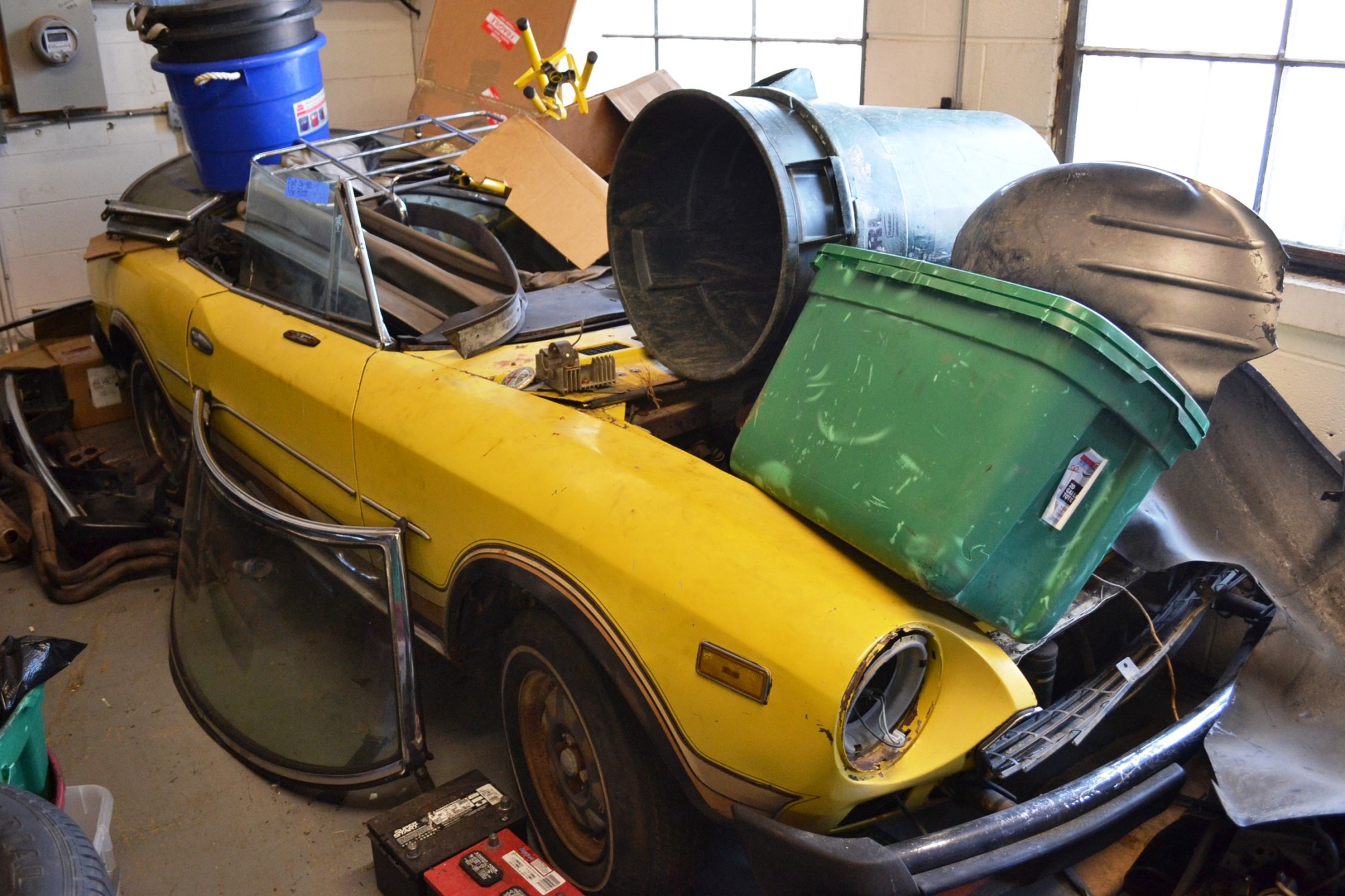Author: Ray Marchica
Spider Gaining Ground on Show Car Circuit

Sunday’s Italian car Concours event in Geneva Illinois was surreal. Sitting in the same row as a stunning Maserati Bora and Ferrari 458 convertible was our entry, a 1985.5 Pininfarina Spider. Fresh off a “best in class” win at the National Fiat Event last month—and finished in the same paint and leather as the Ferrari, the Spider looked right at home. The fact our car was even granted admission to this prestigious event was a big win for Roadster Salon and Fiat. But the response we received from the crowd was even more gratifying. This kind of affirmation by show circuit cronies and the general public was unexpected, and only a dream several years ago.
A short distance away from our sweetheart, were high dollar classics like the 1954 Maserati A6G roadster, and a well sorted 1965 Ferrari 275 GTB. For the vintage car enthusiast, this was sensory overload. Yet among these titans, our lovely Pininfarina stood tall. As I waded through the crowded streets of downtown Geneva, there were literally scores of contemporary sports cars parked proudly by their owners. A pearl yellow Lamborghini Murcielago caught my eye. On the next block were a brand new silver Ferrari California, and a black Porsche 911 GT3 that seemed tame by comparison. I wondered which one of these modern cars would be looked upon as kindly 25 years from now, as the Spider is today. It’s clearly a timeless Pininfarina design, and continues to grow in prestige with each passing year.
Current spider owners need only be patient. The trend is your friend. The death of Sergio Pininfarina has created a surge of collector car interest in all Pininfarina designed automobiles. The 1983-1985 Pininfarina Spider was the only automobile ever produced under Pininfarina’s own name. Few people realize that there were fewer of his cars built during the period than those made by Ferrari. In that context, the Spider is a rare treasure indeed.
This is not to say that the Spider is fully appreciated by everyone. There is no denying the Ferrari DNA, which is part of every Spider ever built. But some Italian car aficionados refuse to give credit when due. The Spider was a beautiful, well balanced sports car, at least twenty years ahead of its time. Clearly, the perception of these cars in the marketplace is changing. Sharp increases at high-line auctions recently for both Fiat and Pininfarina versions of the spider are a testament to this new attitude and growing popularity. The 1969 Fiat Spider, 81-82 Spider turbo, and 85.5 Pininfarina have led the way. Even high volume versions built from 73-80 have seen prices edge higher.
Whether the Spider becomes the next darling of the collector car market remains to be seen. But for one day, at one Concours d’Elegance, it was clear the Spider belonged in this elite collection of Italian art.
Ciao!
Spider values shooting up, but quality restorations cost money…

Trend setters are always going to be subjects of criticism. Every time a Roadster Salon Spider forges into uncharted territory, we get a few snarky emails from people who can’t seem to wrap their heads around our business concept. Well meaning folks we assume, questioning the wisdom of putting more dollars into a restoration or upgrades than a Spider may ultimately return. The comments are usually punctuated with sarcasm concerning our supposed drug use–as in “what are we smoking?”
In truth, anyone who restores a collector car with the intention of selling it for a profit is on shaky ground. While it is certainly possible, most who claim to make money doing so are the beneficiaries of creative accounting. A profit–or more likely the recovery of investment, happens when you find the right buyer after the market luckily moves in your favor.
Roadster Salon restores cars for end users, not speculators. Our Spider restorations are the product of a shared vision. They are built to a customer’s exact specifications, for their enjoyment. In spite of efficiency through repetition and careful monitoring of resources, our margins remain thin. Costs are a reflection of the significant time, material and development that goes into each project. Since even the most valued original example rarely breaks the $50K barrier at auctions, how are we able to justify prices on some models nearly doubling that figure? The answer is simple. We don’t. Our customers do. Resale value is hardly a consideration, as only a handful of our cars have ever hit the secondary market. Each has returned the former owner nearly all their original investment.
Whether we fight fires, heal the sick, or make sure that package gets there by 10:30 the next morning, there is value to the services we all provide. Fundamentally, restoring a classic car (more accurately in our case re-creating one) takes a boat load of time, patience and expertise. There are no shortcuts. Offering restoration services for a fixed price is risky, but a great deal for our customers. On one particularly difficult project, I recall a painful conversation with Rob lamenting our exposure. I calculated the total man hours expended versus the dollars charged, and almost fainted. We would have done better offering fries with our burgers.
At the end of the day, people have different perceptions about value. The best examples of anything—be it a wrist watch, bicycle, camera or Spider—are all going to be expensive. Superior performance and aesthetics separate them from more mundane counterparts. A Timex and a Rolex both tell time. But you will never convince a Rolex owner they are equals. Same can be said for the owners of our cars.


